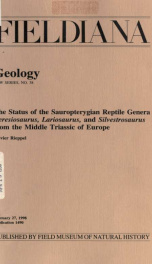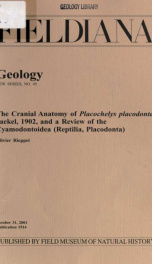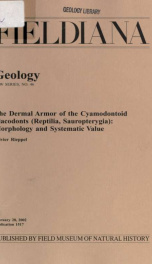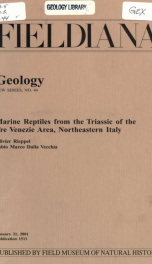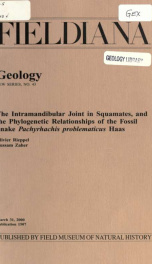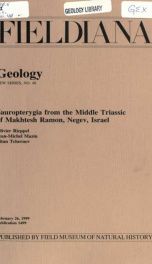The type material of all pachypleurosaurs from the lower Muschelkalk is redescribed and pacypleurosaur systematics are reviewed. Three species of lower Muschelkalk pachypleurosaurs are recognized, Anarosaurus pumilio Dames, Anarosaurus heterodontus n. sp., and Dactylosaurus gracilis Guerich. A cladistic analysis based on 50 characters shows Keichousaurus to be the sister-taxon to all other pachypleurosaurs; Dactylosaurus is the sister-taxon to Anarosaurus plus the Serpianosaurus-Neusticosaurus clade; Anarosaurus is the sister-taxon to the Serpianosaurus-Neusticosaurus clade; Serpianosaurus mirigiolensis is the sister-taxon to Neusticosaurus. The genus Neusticosaurus includes four species, N. edwardsii, N. peyeri, N. pusillus, and N. toeplitschi. The stratigraphic and biogeographic relations of pachypleurosaurs indicate that pachypleurosaurs reached the European epicontinental sea (Muschelkalk Basin) by invasion from teh east in Anisian times, and that a faunal interchange was possible between the Muschelkalk Basin and the southern Alpine intraplatform basin facies at least during late Anisian and Ladinian times Includes bibliographical references (p. 41-43) The type material of all pachypleurosaurs from the lower Muschelkalk is redescribed and pacypleurosaur systematics are reviewed. Three species of lower Muschelkalk pachypleurosaurs are recognized, Anarosaurus pumilio Dames, Anarosaurus heterodontus n. sp., and Dactylosaurus gracilis Guerich. A cladistic analysis based on 50 characters shows Keichousaurus to be the sister-taxon to all other pachypleurosaurs; Dactylosaurus is the sister-taxon to Anarosaurus plus the Serpianosaurus-Neusticosaurus clade; Anarosaurus is the sister-taxon to the Serpianosaurus-Neusticosaurus clade; Serpianosaurus mirigiolensis is the sister-taxon to Neusticosaurus. The genus Neusticosaurus includes four species, N. edwardsii, N. peyeri, N. pusillus, and N. toeplitschi. The stratigraphic and biogeographic relations of pachypleurosaurs indicate that pachypleurosaurs reached the European epicontinental sea (Muschelkalk Basin) by invasion from teh east in Anisian times, and that a faunal interchange was possible between the Muschelkalk Basin and the southern Alpine intraplatform basin facies at least during late Anisian and Ladinian times Fieldiana series has been published as Geological Series by Field Columbian Museum (1895-1909) and Field Museum of Natural History (1909-1943), and as Fieldiana: Geology by Chicago Natural History Museum (1945-1966) and Field Museum of Natural History (1966-1978). Fieldiana Geology New Series No. 1 began June 29, 1979





